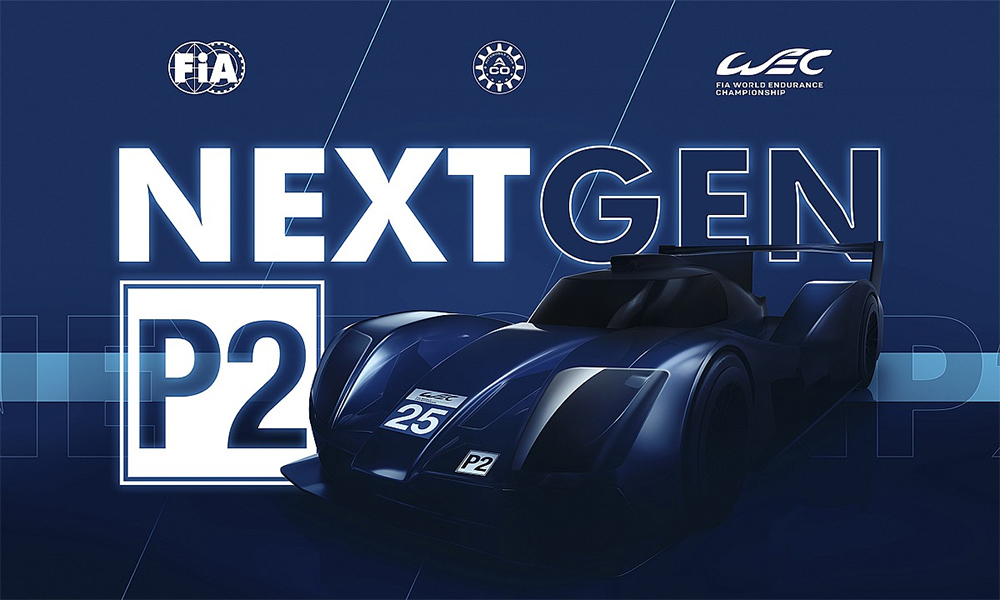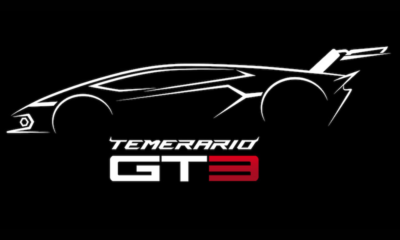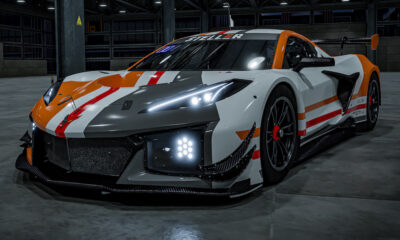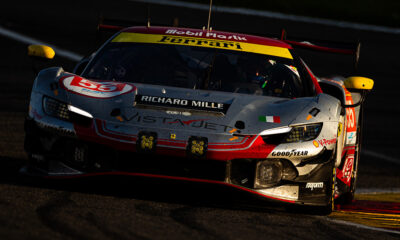
Image: ACO
The ACO’s decision to abandon its original plans for the next-generation LMP2 regs to be based on the LMDh spine has been met with approval from constructors, including Multimatic.
The new regulations, which have yet to be defined, are aimed at creating lighter cars with smaller engines and will be based on a “clean sheet” design.
It was announced earlier this month at the ACO’s annual press conference that the new LMP2 rules planned for 2026 would be pushed back by a further two years to 2028, with the existing cars staying eligible in the European and Asian Le Mans Series, as well as the IMSA WeatherTech SportsCar Championship, through the 2027 seasons.
The vision for the new LMP2 rules originally called for identical chassis to the LMDh cars currently competing in the respective top classes of the FIA World Endurance Championship and WeatherTech Championship, built by the four licensed constructors currently involved in the class: ORECA, Dallara, Ligier and Multimatic.
However, LMEM boss Frederic Lequien effectively confirmed these plans have been axed as the rule-makers seek to create an all-new formula.
“We have taken this decision because we have listened to the paddock,” Lequien told selected media, including Sportscar365, while confirming that ORECA, Dallara, Ligier and Multimatic will also be involved in the new ruleset.
“We believe that for the future of LMP2, we must start again with a blank page, make the car lighter and with a smaller engine, something more linked to the future.”
IMSA President John Doonan described the secondary prototype class as a “critical part” of the series’ landscape and backed the decision to maintain the existing rules for a further two seasons.
“The key to extending the current car is there’s a significant amount of inventory in the marketplace,” Doonan told Sportscar365. “We didn’t want it to be obsolete.
“The thought was, ‘Hey, let’s go through a methodical process to try to bring the next car at the right time and give everybody a longer runway.”
Asked about the next-gen LMP2s racing in the WeatherTech Championship in 2028, Doonan replied: “Certainly if there’s a longer runway like this, then the answer is yes because then everyone can plan and maybe [start] testing in ’27 to be ready for ’28.
“Obviously IMSA kicks off with a 24-hour race at Daytona so whatever we do, we want to have people who have had an opportunity to get their feet wet with the new product.”
Multimatic’s Holt Approves of “Clean Sheet” LMP2 Plan
Multimatic’s executive vice president of Special Vehicle Operations Larry Holt has given his approval of the plan to revamp the next-gen LMP2 rules, as well as confirming the firm’s involvement.
Speaking to Sportscar365 last weekend at Watkins Glen, Holt revealed that he, along with representatives of ORECA, Ligier and Dallara, attended a meeting in Paris with the ACO last month where the new plans were revealed to the constructors.
Holt said he approved of the choice to move away from LMDh spines as he feels that the tubs, including the one Multimatic produced for the Porsche 963, were not particularly well-suited to low-cost, privateer-based racing.
“It’s a clean-sheet design,” Holt told Sportscar365. “The way it was done (using LMDh spines) didn’t even totally make sense at the time.
“To have a common chassis between LMP2 and LMDh, for a constructor like myself, it was an advantage for the investment. Then it became LMDh first. And as soon as that happened, you’re always questioning whether that was the right way round.
“I would endorse [the new plan] because LMP2 is supposed to be affordable. And what would you do with this [LMDh] tub in LMP2?
“You would have this empty cavity where the battery system used to be, which didn’t make a great deal of sense. There’s a lot of stuff that was done [to the chassis] because LMDh is a certain level. The front suspension on the Porsche is quite sophisticated.
“If you were doing a more affordable car, you would have to use that because it’s in the base car. And it has to be at this cost cap.”
However, Holt cautioned that one of the four LMP2 constructors could end up with a dominant market share again with the new rules cycle, much as ORECA has achieved with the 07 model.
It’s understood that the ACO and FIA will introduce a form of Balance of Performance to the class, however.
“Somebody is gonna have the best car and end up with 36 customers again,” he said in reference to an estimate of how many Oreca 07s are currently in competition.
“Let’s call it 40 cars, and even if everyone gets ten apiece, if everyone spends a million and a half or two million [dollars] developing it, you won’t get your money back on ten cars.
“You have to win the performance battle [to turn a profit]. It has to be a competitive landscape where one guy wins and everyone gambles their money.
“I’m a big boy, I sign up to that. I’m not gonna give up [being one of the four licensed constructors] and if it costs me a million and a half, two million, I would do it, and then fight like hell to be the guy who sells [the most cars]!”
Despite the fact Gibson was announced as the engine provider for LMP2 through 2030 last year, Lequien refused to confirm the British firm would continue to power the next generation of regulations when asked.
But Holt says he hopes that Gibson will be kept on, praising its record since the introduction of the current regulations in 2017.
“I think they do an unbelievably good job in terms of reliability, mileage, costs,” Holt said of Gibson. ”I just hope the sanctioning body doesn’t get ahead of themselves asking for turbo this, battery that.
“Look at LMDh. It’s complex. And with customer racing, with the batteries and everything, the control software… it’s really hard.”
John Dagys contributed to this report





















